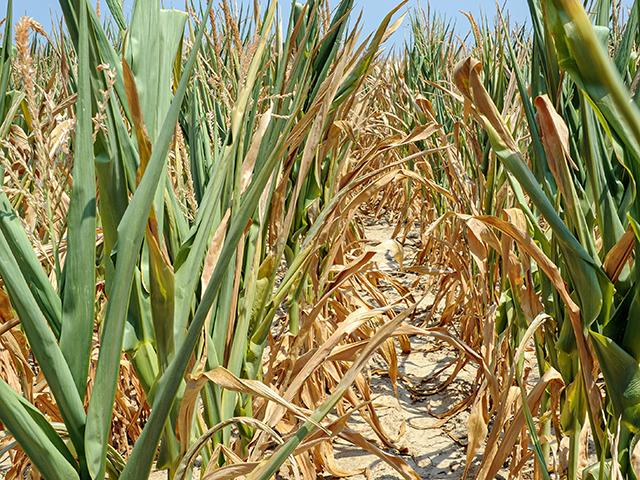Weatherlink
Drought Threat Grows for Crop Areas
It is no secret the 2021 crop year has been dominated by drought. Its viselike grip squeezed production into a mere shadow of the 2020 volume in many regions.
In the U.S., producers in the Northern Plains, Upper Midwest and Northwest saw pastures and fields wither day by day. Canadian Prairies growers experienced the same harsh daily fading of crop prospects. And, in the Far West, devastating fires have destroyed forests and communities; almost everyone everywhere else saw many days of hazy skies from the immense western fires.
WORLDWIDE REACH
North America was not alone in drought this year. Drought was a constant feature in Brazil, leading to a notable drawdown in corn, coffee and sugarcane production along with a shortfall in hydroelectric power capacity. Argentina is enduring a significant reduction in its grain exports because of low river water levels hindering grain barge capacity from interior crop areas to export locations.
Drought pushed the island of Madagascar to the brink of famine this year. In central Asia, Kazakhstan lost thousands of horses to drought and the hottest temperatures on record. Southern Europe, from Spain to Bulgaria, has dealt with drought throughout the year. The usually high-production Black Sea region saw drought in Russia shave wheat production estimates consistently throughout this past summer.
P[L1] D[0x0] M[300x250] OOP[F] ADUNIT[] T[]
Coinciding with these seasonal (and in many areas, record) events, the United Nations Intergovernmental Panel on Climate Change released its latest world climate change assessment this past August. Drought -- specifically, agricultural drought intensified by the continued planetary warming trend -- got a new level of attention in the report because of a focus on soil-moisture declines brought on by higher temperatures.
SUMMER DRYING
That higher temperature trend continues as an overriding trend even when slight increases in precipitation are indicated in interior crop areas. Martha Shulski, state climatologist for Nebraska, outlined this trend in this email exchange:
Shulski wrote: "I think what is most telling in terms of the precipitation projections for the central U.S. is the summer drying trend ... the trends by month are striking -- wetter during the 'colder months' but drying for summer. Also pertinent to agriculture are the projected changes in the minima (overnight low temperatures). At mid-century (2050), those look to be 3-4°C (5.4-7.2°F) warmer than current conditions. Daytime high temperature projections are similar (though slightly lower)."
Shulski also said the offsetting of summer dryness with irrigation would unlikely completely offset the influence of higher temperatures; and that summer heat and dryness also mean more demand for water outside of agriculture.
Drought and its effects the last two years have altered the landscape for a long time. And, future projections make a strong statement that this kind of intense development is more than just a one-off event but instead a condition that will affect not only agriculture but all other facets of our society, for years to come.
**
-- Read Bryce's weather blog at about.dtnpf.com/weather
-- You may email Bryce at bryce.anderson@dtn.com
[PF_1021]
(c) Copyright 2021 DTN, LLC. All rights reserved.



